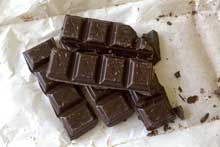Candy’s hutch has been around the corner of the barn, in the shade. This keeps her cool in the summer. But in the winter, she likes to sunbathe in the morning, so we move the hutch about six feet so that it gets the first warm rays of the day. You’ll see more of Candy now. You’ll also see more of the hens – in wet weather they stay sheltered under the hutch. They’d rather be there than indoors (except for the smart and more delicate bantam leghorns who know better and stay inside.) Since the weather forecast for the next week is, “rain, showers, torrential downpours and more rain,” you’re likely to see the girls under that hutch a lot!
By the way, wet weather can make your hens sick. Be especially aware of how your silkies, frizzles and Polish breeds are doing. They don’t have the same warm feather insulation as the other breeds and can catch cold and die, all in a day. Make sure they are warm and dry! Feather-legged breeds like cochins are sturdier, but check that they aren’t damp 24 hours a day. They should be able to roost and dry out. I lost a favorite silkie to cold, wet weather one winter, so I’ve learned the hard way.



